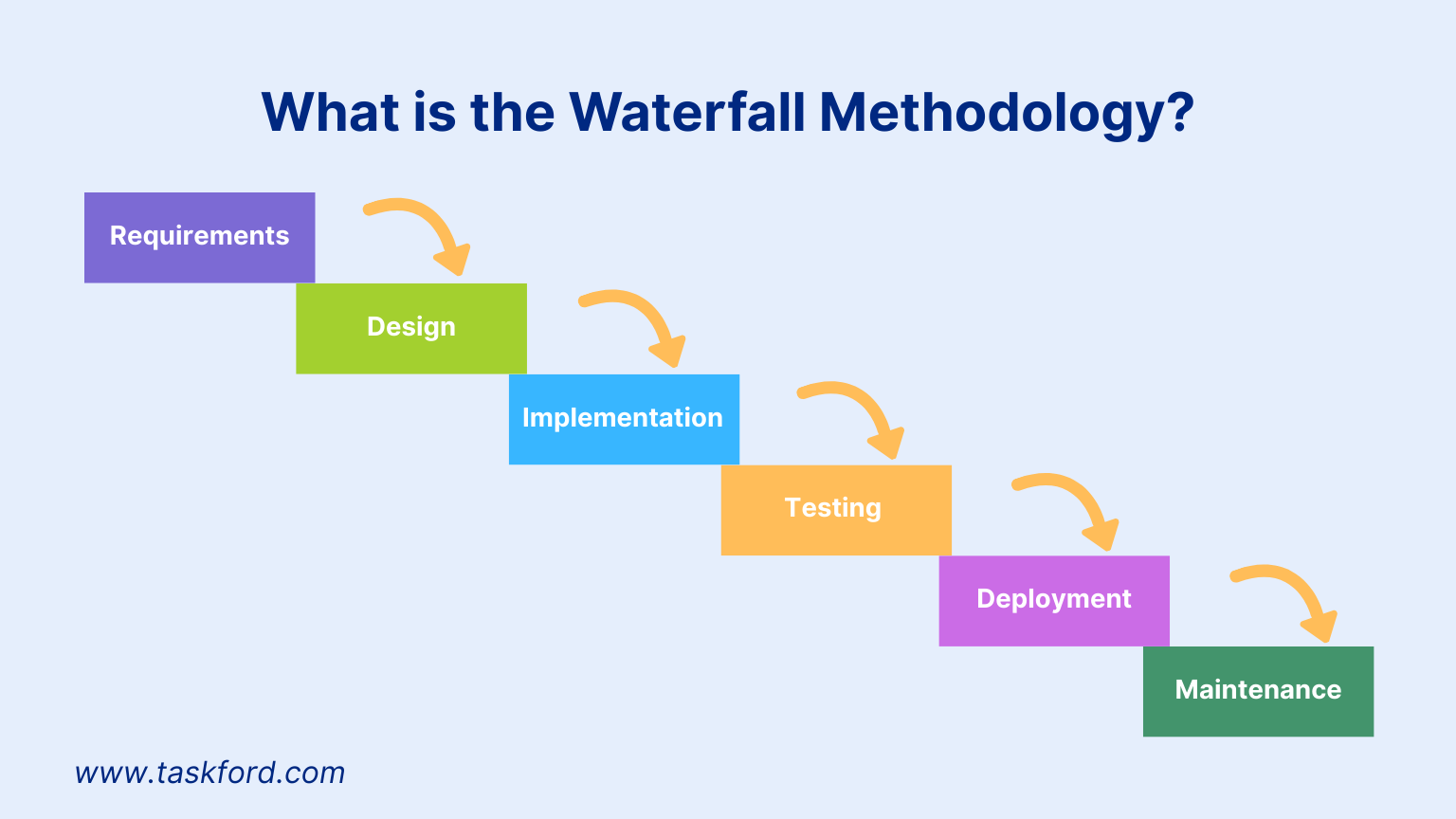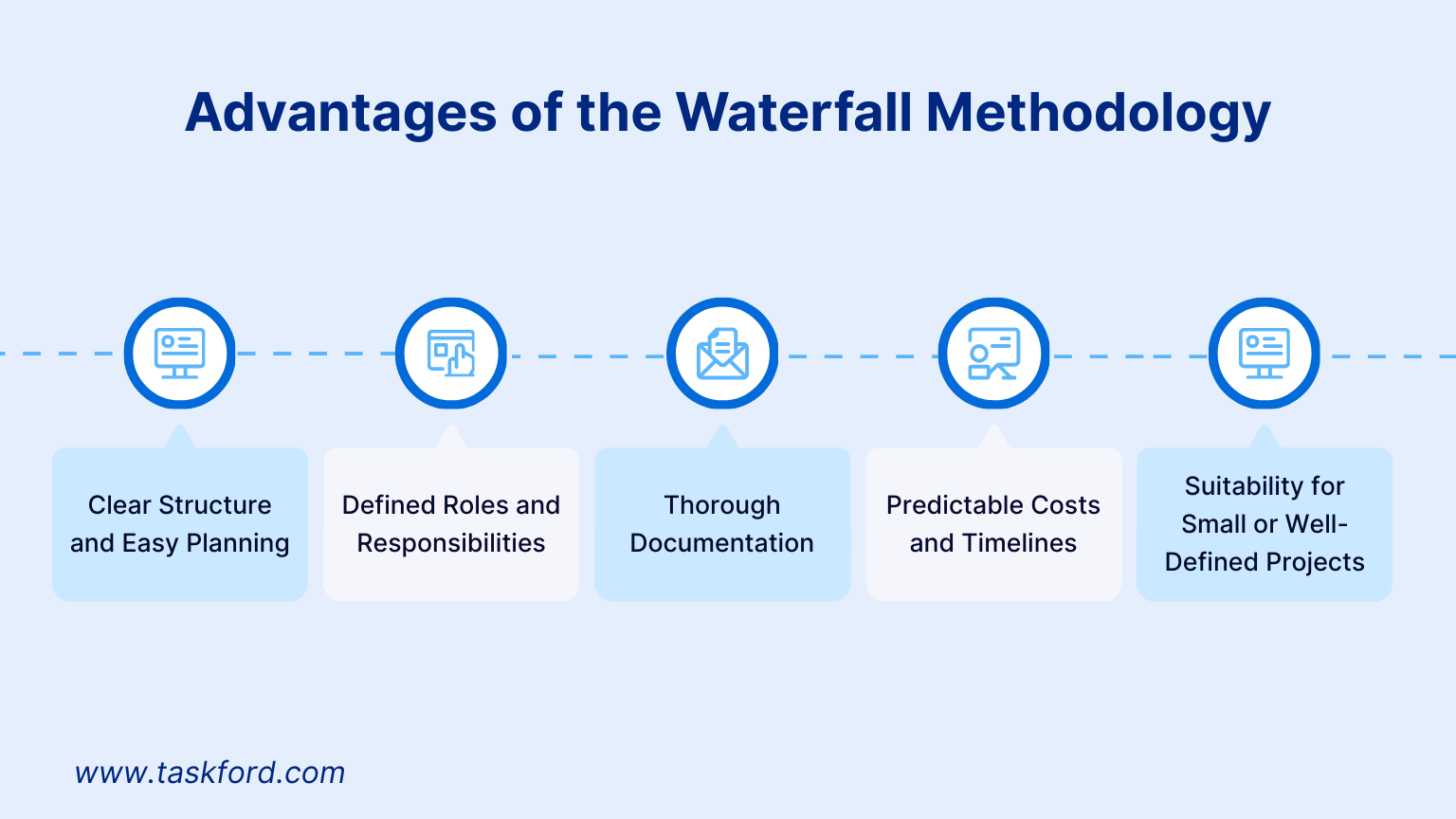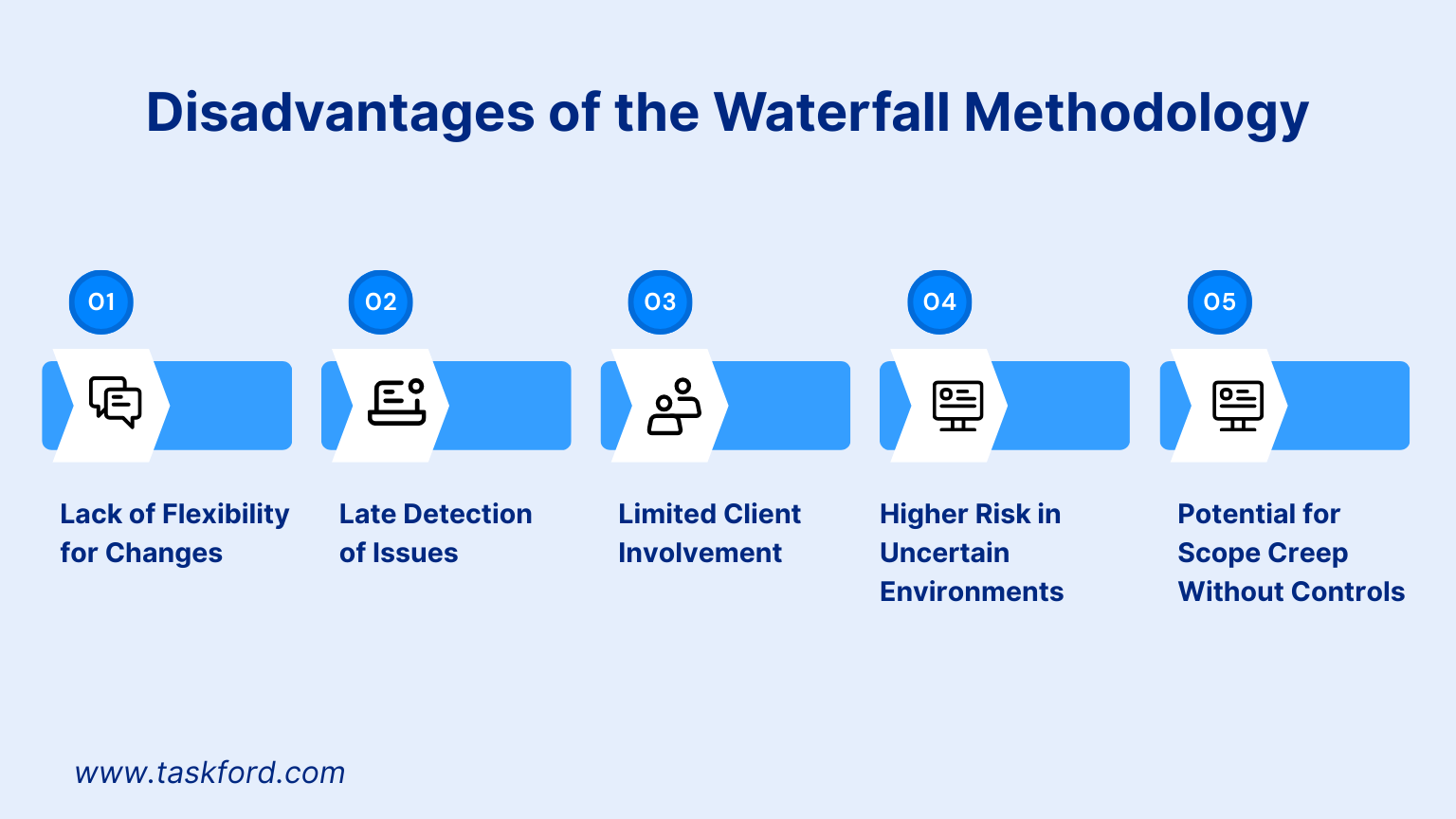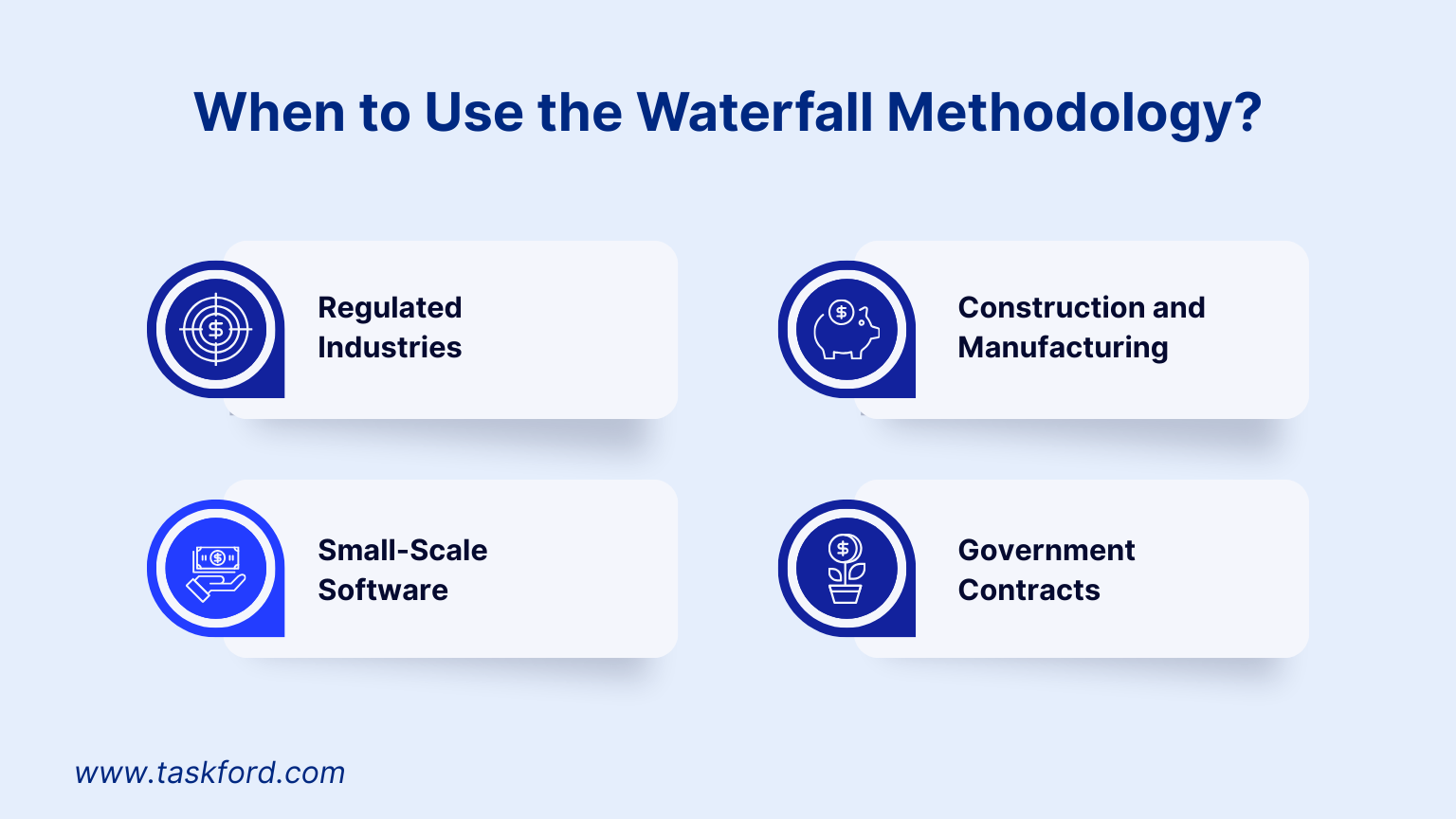Waterfall Methodology in Modern Projects: What are the Advantages & Disadvantages
Discover what is waterfall methodology in project management, it's advantages and disadvantages, is it still relevant in modern projects.
Project management has evolved significantly over the years, with a variety of methodologies emerging to address the specific needs of different industries. Among these, the Waterfall method has remained a foundational approach, widely recognized for its structured and sequential process. However, as the project landscape and technology continue to grow, teams must prioritize flexibility and iterative progress to keep pace with change. Therefore, more adaptive and flexible methodologies like Agile and Scrum have become more popular, and the relevance of Waterfall is increasingly questioned.
Is the Waterfall method still valuable in modern projects? In this article, we will delve into the advantages and disadvantages of Waterfall, helping you determine where and when it still holds its ground in contemporary project management.
Learn more: Agile Project Management vs Waterfall: What’s The Difference?
What is the Waterfall Methodology?
The Waterfall methodology is a traditional project management approach characterized by a linear and sequential process, formally described by Dr. Winston W. Royce in 1970. Although Royce’s original paper presented the model as an example and cautioned against using it without iteration, it became widely adopted in its strict form. Each phase of the project must be completed before the next phase can begin, making the process predictable but inflexible. This model is often visualized as a cascade of steps, with each stage—such as requirements gathering, design, implementation, testing, and deployment—depending on the completion of the previous one. The Waterfall approach has its roots in engineering and construction, where sequential processes are standard, and was later applied to software development and other industries, especially in large-scale, compliance-heavy projects.

Key Phases of Waterfall
A waterfall typically includes these stages:
- Requirements Gathering: Collect all details about what the project needs. This phase sets the foundation and involves stakeholders in defining goals.
- Design: Create plans and blueprints based on requirements. For software, this means system architecture; for construction, it involves drawings.
- Implementation: Build or develop the product. Teams follow the design without major changes.
- Testing: Check the work for issues. This happens after implementation, so fixes occur here.
- Deployment: Release the product to users or clients.
- Maintenance: Handle ongoing support and minor updates.
Each phase produces documents that guide the next. This structure ensures everyone knows their role. In today’s projects, the Waterfall works well when changes are minimal. For example, in regulated industries like healthcare, where compliance requires fixed plans, this method provides control.
Advantages of the Waterfall Methodology

Waterfall offers several benefits that make it valuable in certain modern contexts. Its structured approach helps teams stay organized and meet deadlines.
- Clear Structure and Easy Planning: One main advantage is the straightforward process. With defined phases, project managers can create detailed timelines and budgets early. This predictability aids in resource allocation. For instance, in a construction project, knowing the exact stages allows for precise material ordering and scheduling.
- Defined Roles and Responsibilities: Waterfall assigns specific tasks to each phase, reducing overlap. Developers focus on building, testers on quality checks. This division improves efficiency in large teams. For projects with fixed contracts, like government work, this setup ensures accountability. Clients appreciate knowing what to expect at each milestone.
- Thorough Documentation: Documentation is a core part of Waterfall. Every phase ends with reports and specs. This record helps in audits and future maintenance. In industries like aerospace, where safety standards demand proof of process, this feature is crucial. It also eases knowledge transfer if team members change.
- Predictable Costs and Timelines: By locking requirements upfront, Waterfall minimizes surprises in budget and schedule. Studies indicate it leads to fewer overruns in stable projects. For example, a manufacturing firm producing hardware can estimate costs accurately since designs don’t shift mid-way.
- Suitability for Small or Well-Defined Projects: For shorter projects or those with clear endpoints, the Waterfall excels. It avoids the overhead of iterative methods. A simple website built with fixed features might finish faster under Waterfall than with constant revisions.
Disadvantages of the Waterfall Methodology

Despite its strengths, Waterfall has limitations that can hinder success in dynamic settings. These drawbacks often stem from its inflexible design.
- Lack of Flexibility for Changes: A key disadvantage is the difficulty in handling changes. Once a phase ends, revisiting it costs time and money. If the client’s needs evolve, the project may deliver something outdated. In software development, where user feedback drives updates, this rigidity can lead to failure.
- Late Detection of Issues: Testing occurs near the end, so problems from early phases surface late. Fixing them then is expensive and delays delivery. For complex systems, like integrated software, undetected design flaws can cascade. This risk grows in modern projects with interconnected tech.
- Limited Client Involvement: Clients provide input mainly at the start and end. Without ongoing feedback, the final product might not meet expectations. In today’s market, where customer satisfaction drives success, this gap can harm relationships. Teams miss chances to adjust based on real-time insights.
- Higher Risk in Uncertain Environments: Waterfall assumes stable requirements, but many projects face unknowns. Economic shifts or tech advances can render plans obsolete. In fast-moving fields like app development, this method struggles. Data from 2025 reports highlight its lower use in innovative sectors.
- Potential for scope creep Without Controls: While structured, without strong gates between phases, small changes can sneak in. This disrupts the flow and inflates costs. Project managers must enforce strict reviews to mitigate this, adding administrative burden.
Is Waterfall Methodology Still Relevant?
The relevance of the Waterfall methodology depends on the project’s nature and goals. While flexible approaches like Agile methodology dominate in dynamic fields, Waterfall remains valuable for specific scenarios.
Its structured methodology suits projects with fixed requirements, such as construction or regulated industries like healthcare and aerospace. For example, building a bridge or developing software for medical devices benefits from Waterfall’s clear phases and thorough documentation, ensuring compliance and predictability.
However, Waterfall’s rigidity limits its fit for projects needing frequent changes, like mobile app development. Here, Agile’s iterative cycles allow teams to adapt quickly to user feedback. In modern project management, hybrid models are gaining traction, blending Waterfall’s planning strengths with Agile’s flexibility. For instance, a software project might use Waterfall for initial design and Agile for iterative coding and testing. This approach leverages Waterfall’s predictability while addressing its lack of adaptability.
To determine Waterfall’s relevance, consider: Are requirements well-defined? Is client involvement limited to the start and end? If yes, Waterfall can excel. If not, explore hybrid or Agile methods.
For more on project management approaches, see our guide on project management guide.
When to Use the Waterfall Methodology?

Waterfall fits specific scenarios in modern work. Choose it when requirements are clear and unlikely to change. Examples include:
- Regulated Industries: Healthcare or finance projects need fixed processes for compliance. Waterfall’s documentation supports audits.
- Construction and Manufacturing: Physical builds benefit from sequential steps. Planning all at once reduces onsite errors.
- Small-Scale Software: Simple apps with defined features can use Waterfall for quick completion.
- Government Contracts: Fixed bids align with Waterfall’s predictability.
Avoid it for exploratory work, like R&D, where iteration is key. In 2025, hybrids blending Waterfall with Agile are rising, using Waterfall for planning and Agile for execution. Assess your project by asking: Are requirements fixed? Is the team experienced? If yes, Waterfall may work.
Conclusion
Waterfall methodology offers clear advantages in structure, predictability, and documentation for modern projects with stable requirements. However, its disadvantages in flexibility and late testing make it less ideal for dynamic work. By weighing these factors, you can choose the right approach.
If Waterfall suits your needs, start with solid requirements gathering. For further reading, explore our resources on hybrid project management or best practices in project planning. This understanding can enhance your project management skills and lead to better results.
Subscribe for Expert Tips
Unlock expert insights and stay ahead with TaskFord. Sign up now to receive valuable tips, strategies, and updates directly in your inbox.